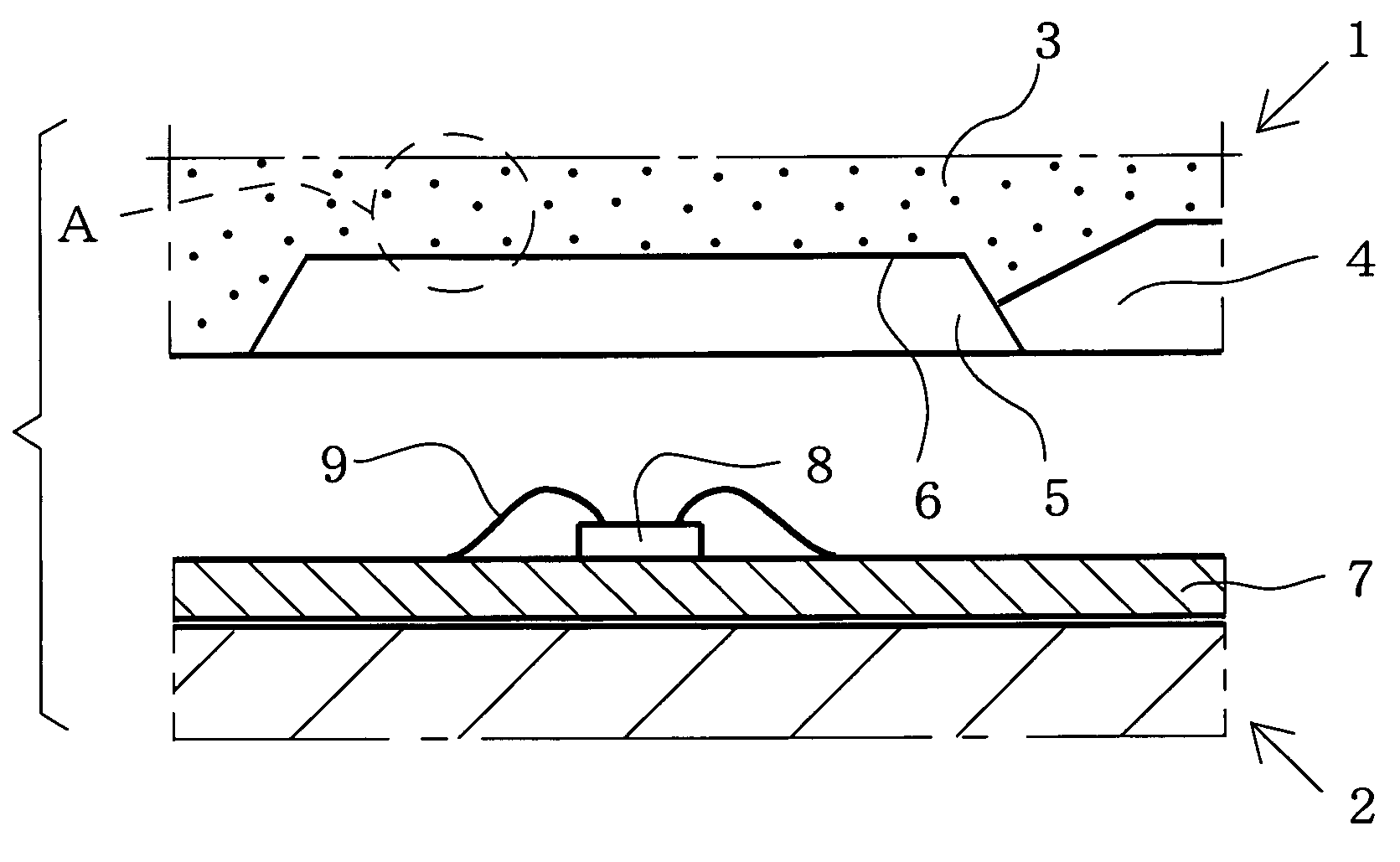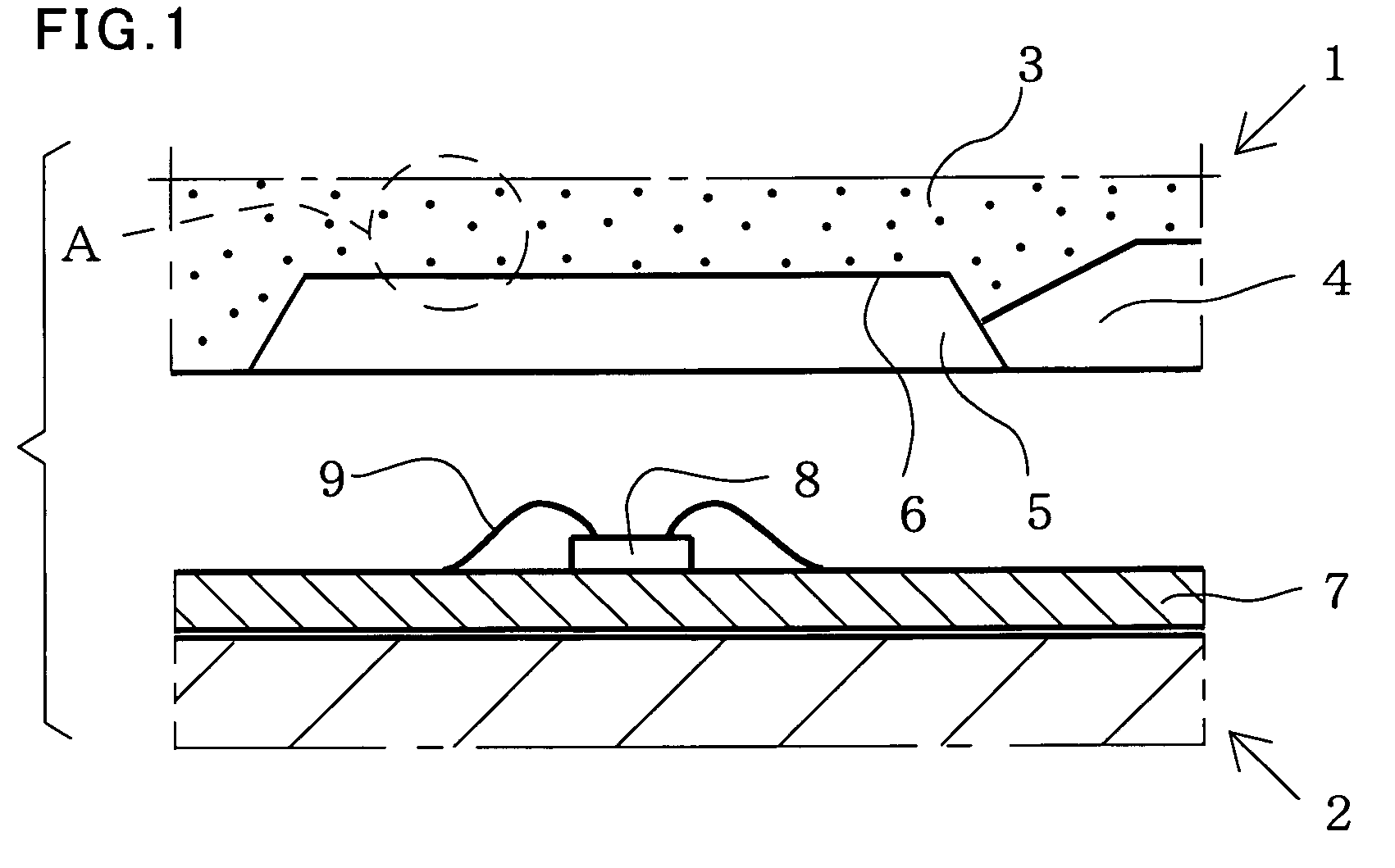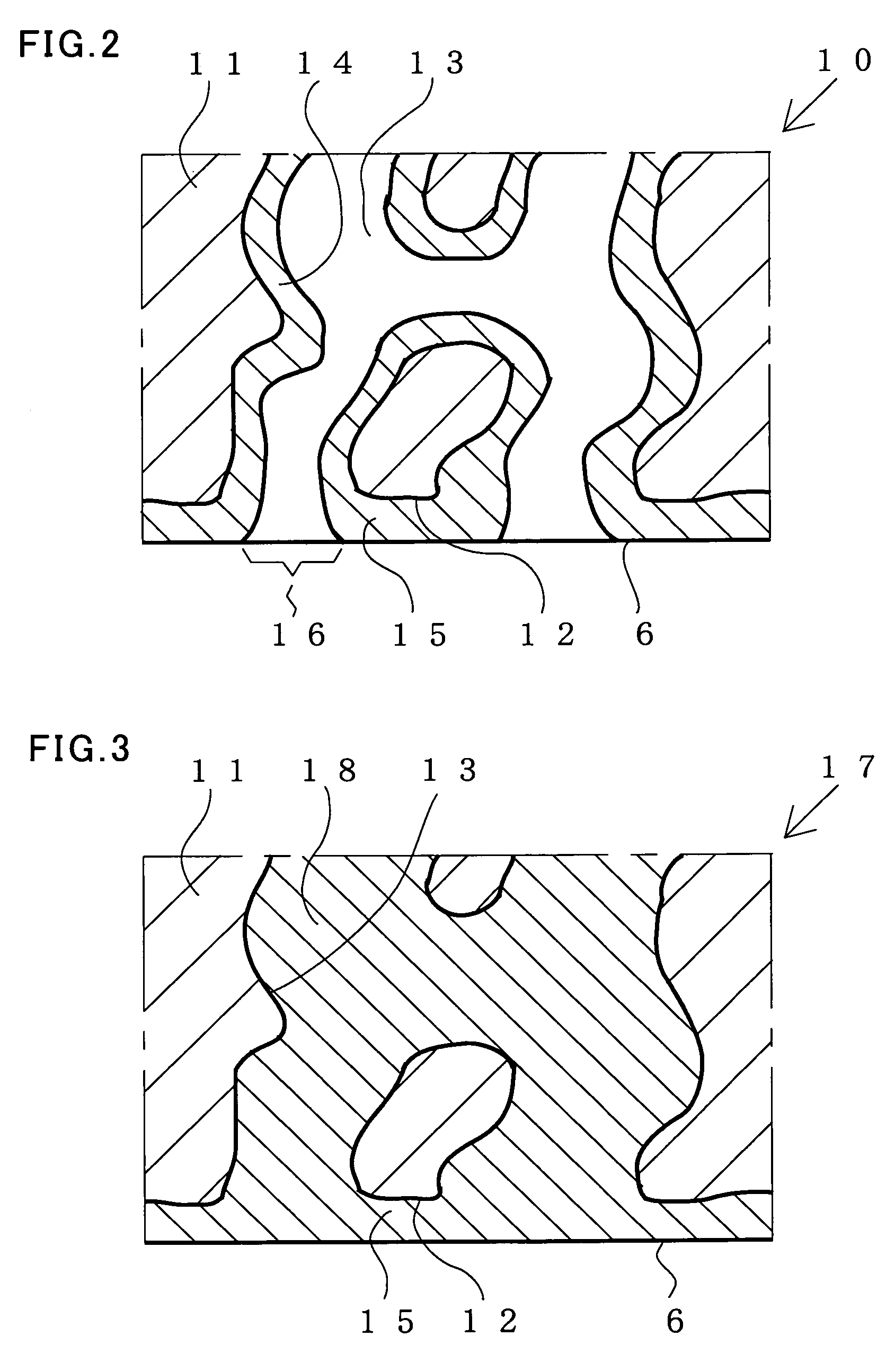Composite material and resin mold
a technology which is applied in the field of composite materials and resin molds, can solve the problems of large difference between the thermal expansion coefficient of inorganic materials and the material for molds, and it is difficult to singly use this organic material as the surface modification material, and achieve excellent unwettability and wear resistance. the effect of fluid resin
- Summary
- Abstract
- Description
- Claims
- Application Information
AI Technical Summary
Benefits of technology
Problems solved by technology
Method used
Image
Examples
first embodiment
[0038]The composite material 3 and the resin mold according to the first embodiment of the present invention are described with reference to FIG. 1. FIG. 1 is a sectional view showing each of the resin molds according to the first to third embodiments of the present invention. The resin mold according to each of the embodiments described below is employed for sealing a chip mounted on a substrate with resin, for example. In this resin sealing, the resin mold stores the wired chip in a cavity thereof. Then, the resin mold is clamped for charging the cavity with fluid resin. Thereafter the fluid resin is hardened to form hardened resin. Consequently, a molding (package) having the substrate and the hardened resin is completed.
[0039]As shown in FIG. 1, a resin molding die according to the first embodiment is constituted of an upper mold section 1 and a lower mold section 2. The upper mold section 1 corresponds to the inventive resin mold. The composite material 3 according to the first...
second embodiment
[0045]The composite material 10 and the resin mold according to the second embodiment of the present invention are described with reference to FIGS. 2 and 3. FIG. 2 is an enlarged sectional view of the composite material 10 according to the second embodiment, and FIG. 3 is an enlarged sectional view of a composite material 17 according to a modification of the second embodiment. Each of FIGS. 2 and 3 corresponds to an enlarged sectional view of a portion A shown in FIG. 1.
[0046]According to the second embodiment, the composite material 10 is used in place of the composite material 3 shown in FIG. 1, for constituting the upper section 1 in FIG. 1, i.e., the resin mold. The composite material 10 shown in FIG. 2 has a substrate 11 made of the first material described with reference to the first embodiment. The substrate 11, singly made of the first material such as zirconia (ZrO2), for example, in the second embodiment, may alternatively be made of a plurality of first materials.
[0047]...
third embodiment
[0059]The composite material 19 and the resin mold according to the third embodiment of the present invention are described with reference to FIG. 4. FIG. 4 is an enlarged sectional view of the composite material 19 according to the third embodiment, and FIG. 5 is an enlarged sectional view of a composite material 26 according to a modification of the third embodiment. Each of FIGS. 4 and 5 corresponds to an enlarged sectional view of the portion A shown in FIG. 1.
[0060]The composite material 19 shown in FIG. 4 has a substrate 20 of the first material described with reference to the first embodiment. The substrate 20, singly made of the first material such as zirconia (ZrO2), for example, in the third embodiment, may alternatively be made of a plurality of first materials. Further, the substrate 20 is provided with a large number of substantially linearly extending communicating holes (hereinafter referred to as one-dimensional communicating holes) 22 extending from a surface 21 of ...
PUM
| Property | Measurement | Unit |
|---|---|---|
| pore sizes | aaaaa | aaaaa |
| thickness | aaaaa | aaaaa |
| thickness | aaaaa | aaaaa |
Abstract
Description
Claims
Application Information
 Login to View More
Login to View More - R&D
- Intellectual Property
- Life Sciences
- Materials
- Tech Scout
- Unparalleled Data Quality
- Higher Quality Content
- 60% Fewer Hallucinations
Browse by: Latest US Patents, China's latest patents, Technical Efficacy Thesaurus, Application Domain, Technology Topic, Popular Technical Reports.
© 2025 PatSnap. All rights reserved.Legal|Privacy policy|Modern Slavery Act Transparency Statement|Sitemap|About US| Contact US: help@patsnap.com



